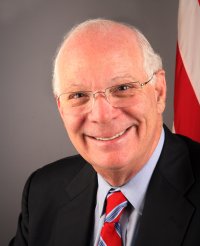 Families who have struggled, or who are currently struggling, to send a child to college will be pleased that Congress has acted to remove the middle man from student loan programs and put the money that is saved into helping more students attend college.
Families who have struggled, or who are currently struggling, to send a child to college will be pleased that Congress has acted to remove the middle man from student loan programs and put the money that is saved into helping more students attend college.
Congress recently voted to stop providing costly subsidies to banks to make student loans. Ending these subsidies to banks will save approximately $61 billion over the next 10 years, savings that will go directly to strengthening the Pell Grant program. Today, 85,000 Maryland students receive Pell Grants to help them attend college, and it is anticipated that increasing funding for the program will make it possible for an additional 15,000 Maryland students to receive Pell Grants.
The federal Pell Grant program is considered the foundation of federal student financial aid, to which aid from other federal and non-federal sources can be added. Pell Grants provide direct grants through approximately 5,400 participating institutions to students with financial need. Pell Grants are usually awarded to undergraduate students who have not earned a bachelor's or a professional degree, and, unlike a loan, a Pell Grant does not have to be repaid.
A strong Pell Grant program is essential to helping a new generation of Americans enter college and gain the education and skills they need for jobs in the 21st Century. The Bureau of Labor Statistics projects that by the year 2018, nearly 75 percent of all new jobs will require an associate’s degree. In the 2008-2009 award year, 6.2 million Americans relied on Pell Grants to help pay for college and career training. The vast majority of those students –- 89 percent -– came from families making less than $40,000 a year.
By redirecting the subsidies that we had been paying to banks, we can strengthen the financial solvency of the Pell Grant program. The declining economy and the return of more students to college, has placed additional burdens on the Pell Grant program. In FY 2011, the Pell Grant program would have faced a $19 billion shortfall, a serious problem that could have reduced the number of grants being awarded and decreased the amount of the grants. By ending costly subsidies to banks, we will be able to avoid significant cuts to the Pell Grant program and other important domestic priorities.
The legislation also entitles qualified non-profit lenders to service Direct Loans and provides about $1.5 billion in additional funding to pay for these efforts. It also more than doubles the investment in the College Access Challenge Grant program. These formula grants to states help organizations (usually non-profit lenders and guaranty agencies) provide financial literacy and debt management counseling to increase the number of low-income students who are prepared to enter and succeed in college.
This bill represents real reform of the student financial aid system. It will ensure that taxpayer money will go directly to helping more students attend college—and not to banks that have benefited from these subsidies for far too long.


